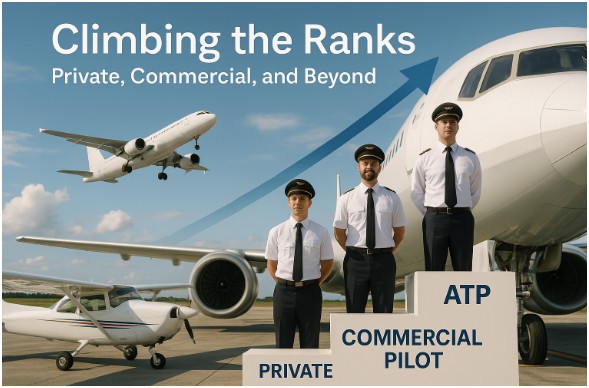The dream of flying has inspired many to pursue a career in aviation, one of the most rewarding yet challenging fields. Becoming a professional pilot involves a structured pathway, starting with a pilot certificate and advancing through dedication, financial investment, and adherence to safety standards.
Starting Your Journey: The Private Pilot License
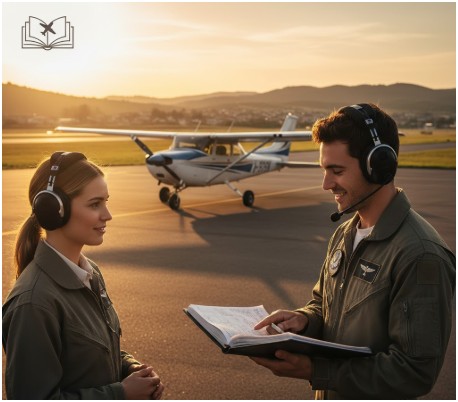
The Private Pilot License (PPL) serves as the foundation for all future aviation endeavors. This initial certification demonstrates your ability to safely operate an aircraft for personal and recreational purposes.
To earn a PPL, candidates must complete a minimum of 40 flight hours, including specific training requirements such as cross-country flights, night flying, and instrument training.
Ground school instruction covers essential topics including aerodynamics, weather theory, federal aviation regulations, and aircraft systems. The comprehensive written exam and practical flight test with a designated pilot examiner complete the certification process.
PPL holders enjoy significant privileges within general aviation. You can carry passengers, fly anywhere within the United States (and internationally with proper endorsements), and operate various aircraft types with appropriate endorsements.
However, important limitations exist: private pilots cannot receive compensation for flying services, and certain weather conditions may restrict your operations.
The PPL represents your entry point into aviation’s professional community. Many pilots use this time to build confidence, explore different aircraft types, and determine their long-term aviation goals.
Consider joining local flying clubs or aviation organizations to network with experienced pilots who can provide valuable career guidance.
Advancing to Commercial Operations
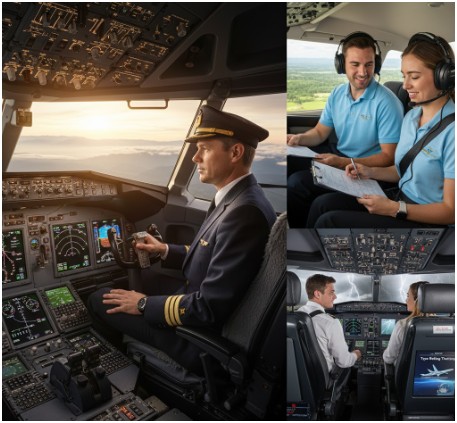
The Commercial Pilot License (CPL) opens the door to paid flying opportunities and marks your transition from hobbyist to professional aviator. This certification requires significantly more training, experience, and demonstrated proficiency than the private license.
Commercial pilot candidates must accumulate at least 250 flight hours, including specific experience in cross-country flying, instrument conditions, and complex aircraft operations.
The training program includes advanced maneuvers, commercial flight operations, and comprehensive study of aviation business practices. Both written and practical examinations test your knowledge and skills at a higher standard than private pilot testing.
With a CPL, pilots can legally receive compensation for flying services. Common entry-level commercial opportunities include flight instruction, aerial photography, cargo operations, and charter flights. Many commercial pilots work multiple jobs while building the flight experience necessary for more advanced positions.
The commercial license also serves as a stepping stone to specialized endorsements and ratings. Multi-engine aircraft privileges, seaplane ratings, and various aircraft type ratings expand your employment opportunities and earning potential.
Each additional qualification demonstrates your commitment to professional development and increases your marketability to potential employers.
Advanced Certifications: Building Your Credentials
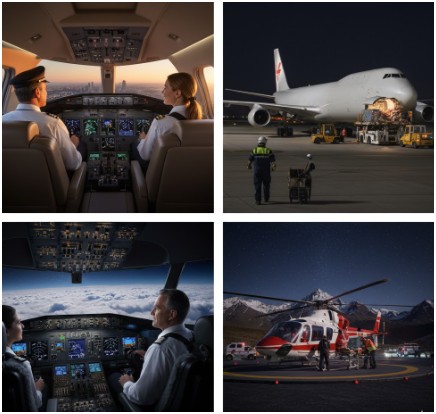
Professional aviation careers often require specialized certifications beyond the basic commercial license. The Airline Transport Pilot License (ATP) represents the highest level of pilot certification and is mandatory for airline captain positions.
ATP candidates must possess extensive flight experience—typically 1,500 total flight hours with specific experience requirements in various flying conditions.
The demanding written examination covers advanced topics including airline operations, crew resource management, and high-altitude aerodynamics. Many pilots pursue ATP certification while working in other commercial flying positions.
Flight instructor certificates offer another pathway for career advancement and experience building. The Certified Flight Instructor (CFI), Certified Flight Instructor-Instrument (CFII), and Multi-Engine Instructor (MEI) ratings allow pilots to teach others while accumulating flight hours.
Instruction work provides steady employment opportunities while developing communication skills and deepening your understanding of aviation principles.
Aircraft type ratings become essential as your career progresses. Each specific aircraft model requires individual certification, particularly for jets and larger aircraft. These intensive training programs, often conducted at specialized facilities, can significantly impact your career trajectory and earning potential.
Exploring Specialized Aviation Careers

The aviation industry encompasses diverse career paths, each requiring specific skills and qualifications. Corporate aviation offers pilots the opportunity to fly business executives and high-net-worth individuals in sophisticated aircraft. These positions often provide regular schedules, competitive compensation, and the chance to visit unique destinations.
Cargo flying represents a significant sector of commercial aviation. Freight pilots operate everything from small delivery aircraft to massive cargo jets, supporting global commerce and logistics operations.
This field offers steady employment opportunities and the potential for rapid career advancement, particularly as e-commerce continues expanding.
Airline piloting remains the pinnacle career goal for many aviators. Regional airlines provide entry-level opportunities for building jet experience and airline-specific training. Major airlines offer the highest compensation levels and most prestigious positions in commercial aviation.
The pathway to airline careers typically requires extensive flight experience, impeccable safety records, and often specific educational backgrounds.
Specialized fields such as helicopter operations, agricultural aviation, and emergency medical services provide alternative career paths. Each sector demands unique skills and often requires additional training beyond standard fixed-wing aircraft experience.
Building Experience and Industry Connections
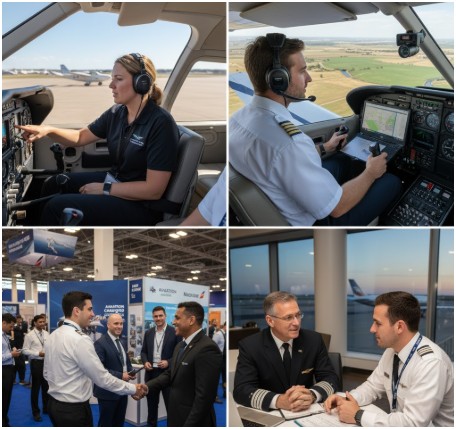
Successful aviation careers require strategic experience building and professional networking. Many pilots begin with flight instruction positions, which provide steady employment while accumulating the flight hours necessary for advanced positions. Consider opportunities at flight school in Dallas or similar institutions to gain valuable teaching experience.
Time-building strategies vary based on individual circumstances and career goals. Some pilots pursue multiple part-time flying jobs, combining instruction with charter work or aerial surveys. Others focus on single positions that offer rapid hour accumulation and mentorship opportunities.
Professional networking plays a crucial role in aviation career advancement. Industry organizations, pilot associations, and aviation trade shows provide opportunities to meet potential employers and learn about job openings.
Building relationships with experienced pilots, maintenance professionals, and aviation business leaders creates valuable connections throughout your career.
Continuing education remains essential in aviation careers. New regulations, technological advances, and industry best practices require ongoing learning and adaptation.
Many successful pilots pursue additional ratings, attend industry seminars, and maintain membership in professional organizations throughout their careers.
Conclusion
Now that you have a better understanding of aviation careers, it is clear that this industry offers diverse and rewarding opportunities for individuals with a passion for flying.
Whether you aspire to be a pilot, air traffic controller, maintenance technician, or work in other areas of aviation, there are endless possibilities to explore.

